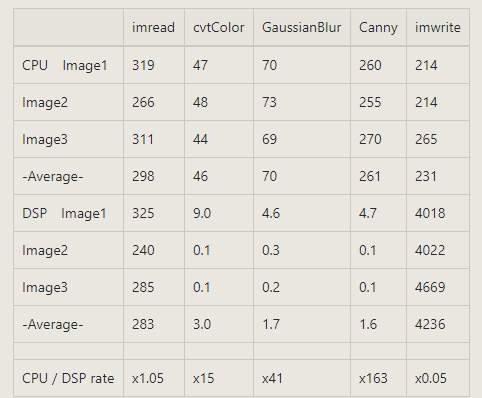Tool/software: Linux
Hello,
I use AM5728-EVM with OpenCV(enable DSP). I wonder that my Test Programs are work well.
My questions are("API" means OpenCV C++ API):
1. Enable DSP is too fast:
- I think that the test image(A4@300dpi, about 2600*3700 px, JPEG)is processed less than 1ms is too fast.
- These may be asynchronous processing? and other API include these wait time for synchronize?
2. After acceralated API, other API be late:
- For example, "canny" is acceralated, but next API like "imwrite" with current image( or "imread" with next image, even if skipped "imwrite"), are late.
- As a result, total time with enable DSP is longer than with disable DSP.
3. If 1 and 2 are normal behavior, is the following sequence unsuitable use-case?
- Receive image from imaging unit -> Image read -> Image processing 1 -> Image prosessing 2 -> ... -> Image write -> Sending image to Host
- (I think these flow are very commonly...)
Following table is my test result.
- File processing order is:
enable DSP(Change environment variable) -> DSP+image1 -> DSP+image2 -> DSP+image3 -> disable DSP ->CPU+image1 -> CPU+image2 -> CPU+image3 .
- Internal processing order is:
imread -> cvtColor -> GaussianBlur -> Canny -> imwrite.


